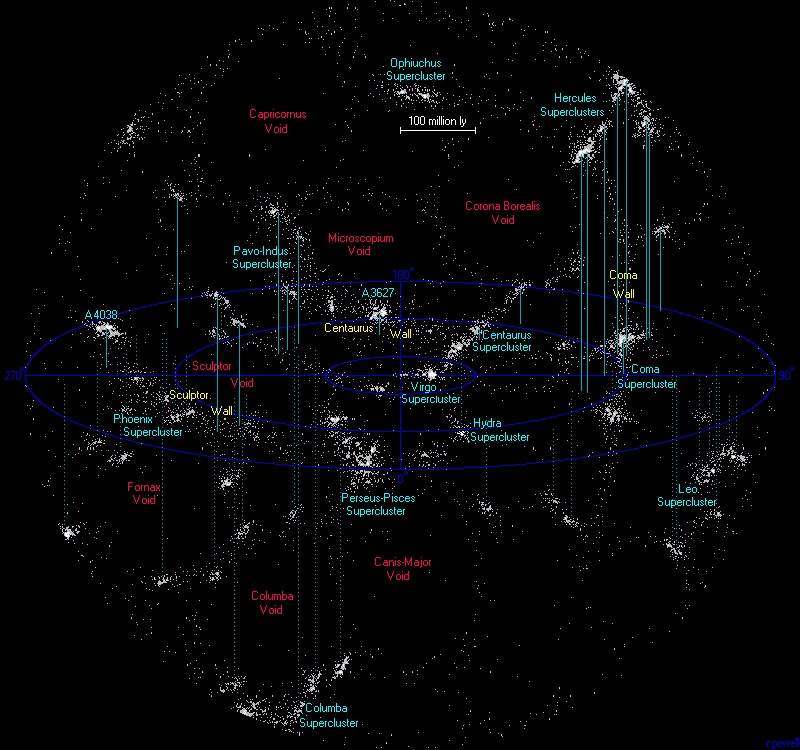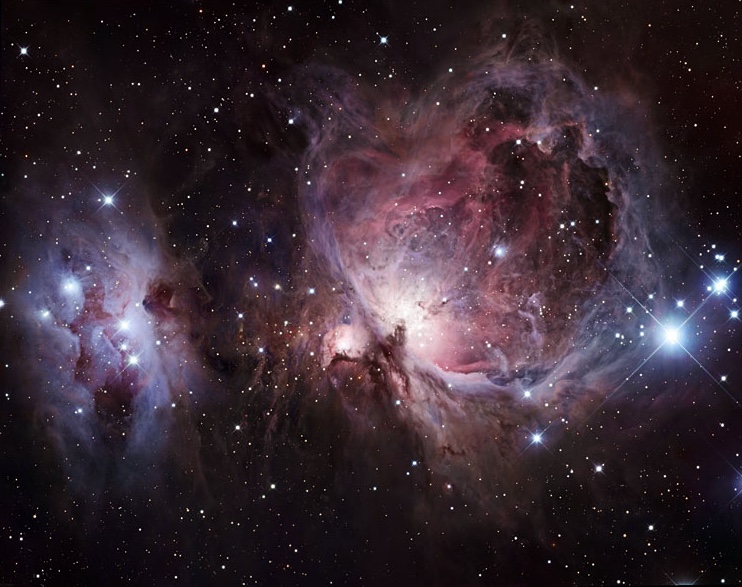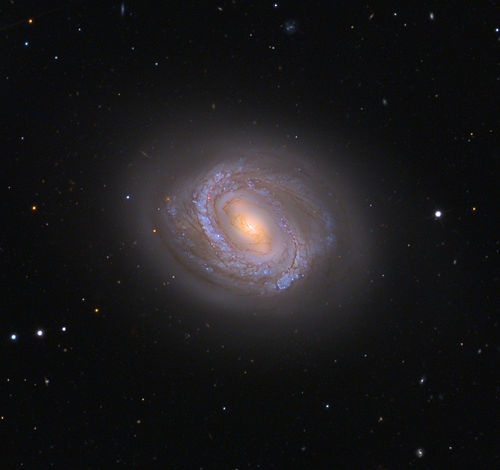The original question was: Is there any location in intergalactic space which is so far away from anyplace that it would be impossible to see anything with normal naked eye vision? No stars, but no galaxies, no nothing — just an empty void in all directions?
In other words, the middle of nowhere — the loneliest place in the universe.
Physicist: Yup! A bunch of them. They’re called cosmic voids.
The matter in our universe arranges itself in huge sheets and filaments of galaxy clusters wrapped around vast empty bubbles, like bread or a sponge. Even inside of galaxies space is almost completely empty; on the order of 1 atom per cubic centimeter and a star every few lightyears. But in the void between those galaxies, there is as close to nothing as you will ever find. The largest voids are on the order of a billion lightyears across.

A map of the fairly-local universe: stuff within about half a billion light years in every direction. Our galaxy is in the center of this map, but the scales here are so large that each dot is a cluster of many galaxies.
Only folk inside galaxies get starry skies, so the sky in every direction around you would boast a distinct lack of stars. But the question remains: could you see the galaxies that make up the walls of the void? Fortunately, the legwork (eyework?) for determining what is and isn’t visible to the naked eye has been done. Using naked eyes.
In the 1770’s comet-hunting was a hip thing for the telescope-wielding wealthy of Europe to do. Messier (who pronounced his name “Messy A”, because he was French) was tired of getting excited about the same set of barely-visible blurs night after night, so he wrote down everything he could see that definitely was not a comet and where it could be found. Incidentally, Messier did find some comets, but those discoveries are completely forgettable compared to his list of things you can see. The Messier Objects are are not stars, not comets, and not moving. That leaves a lot of stuff, all of which looks like a smudge or wisp of cloud, including: nebulae (“giant space smoke”), globular clusters (dense knots of stars of our galaxy), and farthest away, nearby galaxies.

M42, The Orion Nebula, is 1300 light years away (well inside of our galaxy). This appears about twice the size of the Moon in the sky and can easily be mistaken for a cloud. Just so you can find it: this picture is the sword in the Orion constellation.
The most distant galaxy visible to the naked eye is about 68 million light years away and fifty-eighth on Messier’s list: the ingeniously monikered M58. So, about 70 million lightyears is a reasonable upper-limit to how far away a galaxy can be seen by a person.

M58, a galaxy about 68 million light years away, appears to be about a sixth the size of the Moon in the sky. Under ideal circumstances it’s just barely visible to the naked eye as a tiny smudge.
Cosmic voids aren’t perfectly empty, just a lot emptier than the galaxy-laden regions of the galactic filaments. There is still the occasional “rogue galaxy” to be found drifting about. If you were in the middle of a void, and you turned off all the lights in your spaceship to let your eyes really adjust to the dark, you might be able to see the faintest smudge or two marring the black around you. If you had a reading-light on, you wouldn’t be able to see anything at all.
Our understanding of cosmic voids is growing rapidly, but there’s still a hell of a lot to learn. The base problem with astronomy has always been depth (i.e., the sky looks like it’s painted on a dome). A century ago we didn’t even know that other galaxies existed because we couldn’t tell the difference between globular clusters (dense groups of stars in our galaxy) and other galaxies (groups of stars explicitly not in our galaxy). Now we’re faced with a more subtle difficulty: it can be difficult to tell if a given galaxy is in the middle of a void or on the edges. An error of 5%-20% in the distance is not unusual on intergalactic scales and that can make it very difficult to determine exactly how empty a given void is.
If you were meandering about in the middle of a Cosmic Void, then you might perceive, at the very edge of your ability to see and under the best conditions, some of the galaxies in the walls of the void or the rare few in the void with you. The universe would appear to you as the interior of a hollow obsidian sphere, with a couple fingerprint smudges here and there.
This isn’t part of the question, but worth pointing at: where we are in the cosmic web.







14 Responses to Q: Where is the middle of nowhere?